Optical illusions in the wild
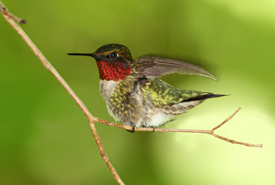
Ruby-throated hummingbird (Photo by Brian Lasenby)
Yet another optical illusion has the internet up in fits. In case you missed #TheDress and its sequel, the Adidas jacket, an image of what appears to be a rock lodged in a brick wall will make you think twice about the reality you perceive.
So this begs the question: If we can be manipulated by optical illusions, are animals affected by them as well? Here are a few examples that might blow your mind:
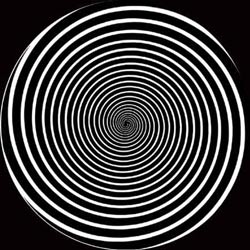
Spiral pattern (Graphic by Wikimedia Commons)
A University of British Columbia research study found a hummingbird’s stationary hover can be hacked with a moving visual pattern. These master hoverers, who can stabilize their hover down to the millimetre, were thrown off by as much as a centimetre by these patterns. Even when they were given time to adjust, the effects on their flight weren’t completely eliminated.
Some species cleverly use optical illusions to their advantage. Male great bowerbirds trick prospective mates into thinking they are larger than they appear. The male constructs a bower — a folly built sometimes in a shape of a dome, with an avenue and an inner court. The female looks in from the avenue as the male entices her with his display.
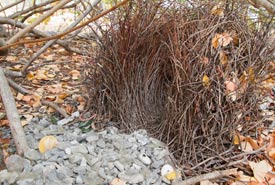
A bower is constructed with interwoven branches (Photo by JJ Harrison/Wikimedia Commons)
Now get this: researchers found that stones, bones and sticks were arranged from small to large, creating an illusion called “forced perception.” This trick is likened to what we see when looking at a gradient of blocks arranged from small to large. Was it pure chance? Even after researchers disrupted the objects in the court, the male restored the gradient within weeks.
More broadly speaking, animals make use of visual perception (or is it deception?) in their day-to-day lives for purposes such as hunting and camouflaging.
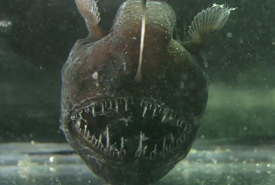
Humpback anglerfish (Photo by Javontaevious/Wikimedia Commons)
One of my favourite deep sea fish species is the anglerfish. It has a ghastly look and beastly set of teeth, and most females of the kind are topped with an appendage that protrudes from above their head that resembles a fleshy, luminous worm. In the lightless bottom of the sea, female anglerfish lure unsuspecting prey with their built-in “fishing rod.”
Camouflaging is another trick used by many species. One of the examples I used in an earlier post highlighted how the giant swallowtail butterfly’s larva resembles a lump of excrement.
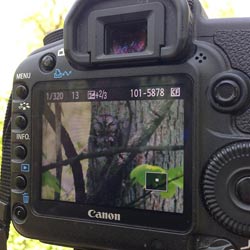
Eastern screech owl camouflaged (Photo by Quincin Chan/NCC staff)
And speaking of camouflage, some species of owls are great at concealing themselves in trees. For example, the eastern screech owl is famed for being superbly camouflaged in the nooks and crannies of trees during the day. My colleague located this fella (left) with the help of a guide, and she said it took her a few moments to figure out what she was looking at!
Finally, if you were good at solving those Where's Waldo? puzzles, you might want to try and solve the case of the missing sheep in Saskatchewan. Take a look at the first photo on this page. Are you able to find the 550 missing ewes? The sheep are so well camouflaged in the grassland that the entire flock seems to have disappeared.
It goes to show: whether for humans or wildlife, what we think we see at first may not be the whole picture. Do you have examples or stories of a time you were visually fooled by something in nature? Share your experience with us in the comment box below!


